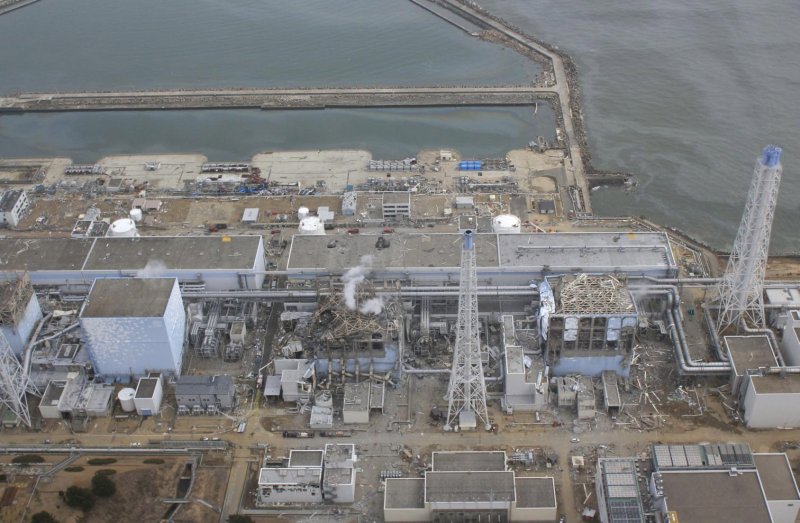The crippled Fukushima Dai-ichi nuclear power plant is seen in Okumamachi, Fukushima prefecture, northern Japan in this March 20, 2011 aerial photo taken by a small unmanned drone and released by AIR PHOTO SERVICE. From left: Unit 1, partially seen; Unit 2, Unit 3 and Unit 4. UPI/Air Photo Service Co. Ltd. |
License Photo
TOKYO, June 6 (UPI) -- Japan's government says it will approve incinerating and burying rubble possibly contaminated with radiation from the damaged Fukushima nuclear power plant.
The country's Environment Ministry plans to allow burying rubble in the coastal and central parts of Fukushima Prefecture that could be contaminated with radiation from the quake- and tsunami-damaged nuclear facility in the northeastern area of the prefecture, Kyodo News reported Monday.
Ten municipalities with low levels of contamination are already being allowed to handle debris under normal procedures, but the ministry said it would expand the eased restrictions to other parts of the prefecture, except for government-designated off-limits zones and evacuation areas.
It will continue to ban the transfer of the debris to areas outside Fukushima prefecture, the ministry said.
Ministry estimates say 23.82 million tons of rubble resulted from the March disaster in the coastal areas of Iwate, Miyagi and Fukushima prefectures alone.
Meanwhile, researchers say a small amount of plutonium thought to have been emitted from the crippled nuclear plant has been detected in soil around the facility.
It is the first time plutonium has been found there, but researchers said the level detected in samples of soil from the town of Okuma, about a mile from the front gate of the nuclear plant, is lower than the average level of plutonium observed in Japan following past bomb nuclear tests abroad.
By analyzing the proportion of three types of isotopes in the plutonium, researchers confirmed the substance was emitted from the crippled Fukushima plant and was not from past nuclear bomb tests.















